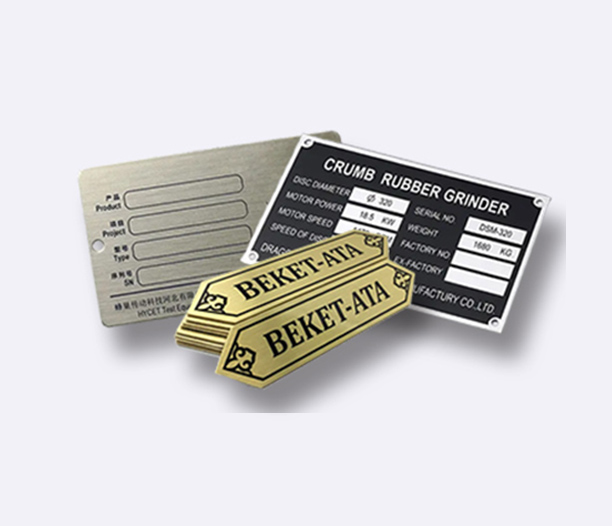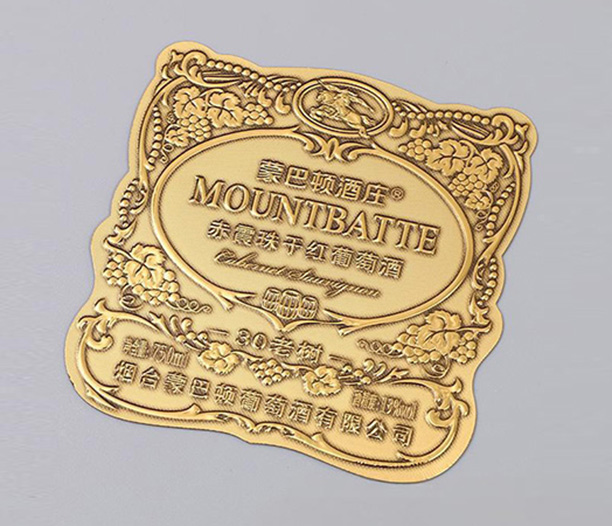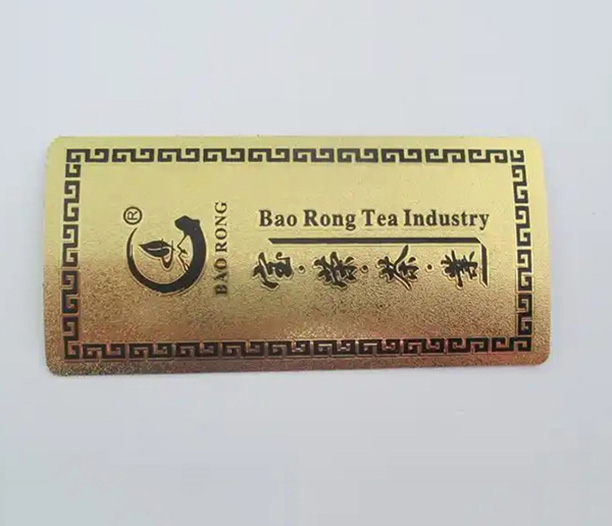Stainless steel nameplates are versatile and durable identification solutions used across various industries for branding, labeling, and informational purposes. These nameplates are crafted from high-quality stainless steel, known for its resistance to corrosion, longevity, and professional appearance. Whether you're in manufacturing, construction, or retail, understanding the ins and outs of stainless steel nameplates can help you make informed decisions for your projects. In this comprehensive guide, we'll explore stainless steel nameplates from multiple angles, including their benefits, applications, manufacturing processes, types, and common questions. By the end, you'll have a solid grasp of why stainless steel nameplates are a top choice and how to address typical concerns. Let's dive in!
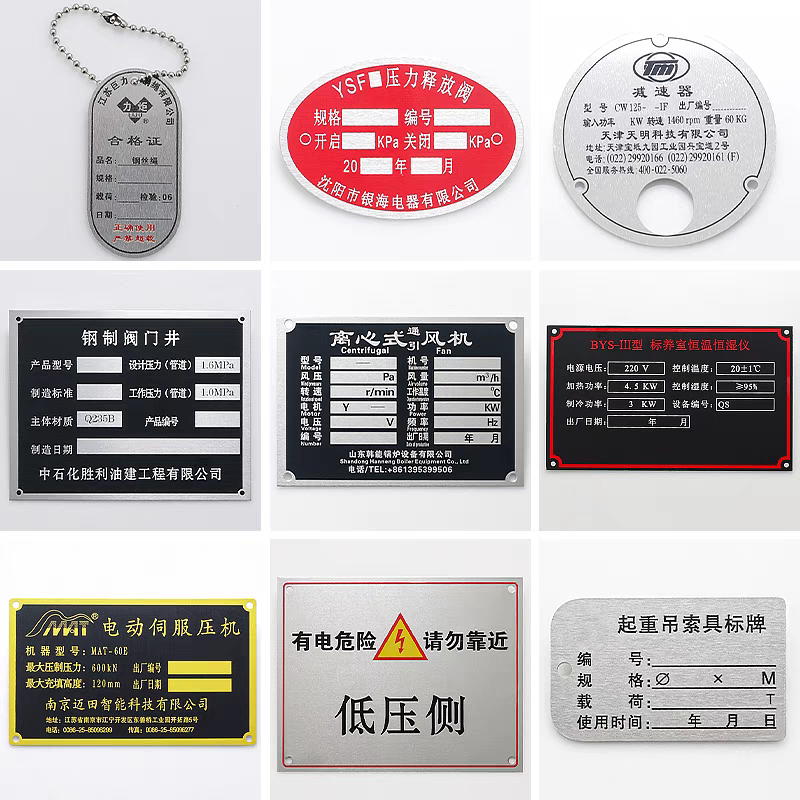
What Are Stainless Steel Nameplates?
Stainless steel nameplates are flat, typically rectangular plates made from stainless steel that are used for identification, branding, or informational labeling. They are often engraved, etched, or printed with text, logos, serial numbers, or other details. The primary material, stainless steel, is an alloy composed mainly of iron, chromium, and other elements like nickel, which provides excellent resistance to rust, tarnish, and environmental damage. This makes stainless steel nameplates ideal for both indoor and outdoor use, where durability and aesthetics are crucial.
These nameplates come in various sizes, thicknesses, and finishes, such as brushed, polished, or matte, to suit different needs. Common applications include equipment labeling, architectural signage, product branding, and compliance plates in industries like automotive, aerospace, and healthcare. The versatility of stainless steel nameplates allows for customization in terms of shape, color, and attachment methods, such as adhesive backing, screws, or welding. Overall, they serve as a reliable means of conveying information while withstanding harsh conditions, ensuring longevity and readability over time.
Benefits and Characteristics of Stainless Steel Nameplates
Stainless steel nameplates offer numerous advantages that make them a preferred choice in many sectors. Here are some key benefits and characteristics:
Durability and Longevity: One of the standout features of stainless steel nameplates is their exceptional durability. They resist wear and tear, impacts, and abrasion, making them suitable for high-traffic or industrial environments. Unlike plastic or other metals, stainless steel does not easily degrade, ensuring that the nameplates remain legible and intact for years.
Corrosion Resistance: Thanks to the chromium content in stainless steel, these nameplates are highly resistant to corrosion, including rust, oxidation, and chemical exposure. This makes them ideal for outdoor use or in humid, salty, or acidic environments, such as marine settings or chemical plants.
Aesthetic Appeal: Stainless steel nameplates provide a sleek, professional look that enhances branding and visibility. They can be finished in various ways—like mirror polishing for a shiny effect or bead blasting for a subtle texture—to match aesthetic requirements. This versatility allows businesses to maintain a consistent and high-quality image.
Easy Maintenance: Maintaining stainless steel nameplates is straightforward, as they can be cleaned with simple solutions like soap and water without risking damage. This low maintenance requirement reduces long-term costs and effort.
Environmental Friendliness: Stainless steel is recyclable, making stainless steel nameplates an eco-friendly option. Their long lifespan also means less frequent replacements, contributing to sustainability efforts.
Customizability: From size and shape to engraving and color fills, stainless steel nameplates can be tailored to specific needs. This flexibility ensures they meet exact specifications for branding or functional purposes.
These characteristics highlight why stainless steel nameplates are a reliable investment, offering both practical and aesthetic benefits across diverse applications.
Applications of Stainless Steel Nameplates
Stainless steel nameplates are used in a wide range of industries due to their robustness and adaptability. Here are some common applications:
Industrial Equipment and Machinery: In manufacturing and engineering, stainless steel nameplates serve as identification tags for machines, providing details like model numbers, safety warnings, or maintenance instructions. Their durability ensures they withstand oil, heat, and mechanical stress.
Architectural and Building Signage: For buildings, bridges, and public infrastructure, these nameplates are used for room numbers, directional signs, or commemorative plaques. Their resistance to weather and vandalism makes them ideal for long-term outdoor exposure.
Automotive and Aerospace: In these sectors, stainless steel nameplates are employed for VIN (Vehicle Identification Number) plates, component labels, and compliance markings. They meet strict standards for safety and durability under extreme conditions.
Medical and Healthcare Devices: Hospitals and medical equipment manufacturers use stainless steel nameplates for labeling devices, surgical tools, and patient information boards. The material's hygienic properties, ease of sterilization, and corrosion resistance are critical in sterile environments.
Consumer Products and Branding: From appliances to electronics, stainless steel nameplates add a premium touch to products, displaying logos, serial numbers, or certifications. They help in brand recognition and customer trust.
Marine and Outdoor Environments: Due to their corrosion resistance, these nameplates are perfect for boats, docks, and outdoor fixtures, where saltwater and moisture are prevalent.
The versatility of stainless steel nameplates ensures they meet the demands of various settings, providing reliable performance and enhancing safety and communication.
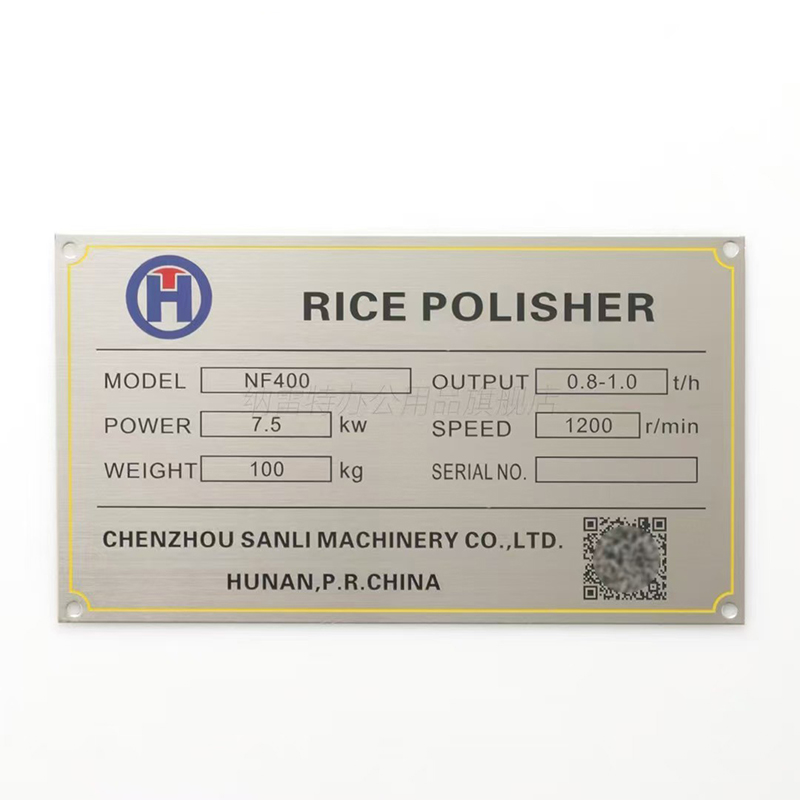
Manufacturing Process of Stainless Steel Nameplates
The production of stainless steel nameplates involves several steps to ensure quality and precision. Here's an overview of the typical manufacturing process:
Material Selection: The process begins with choosing the appropriate grade of stainless steel, such as 304 or 316, based on the application's requirements for corrosion resistance, strength, and finish. The steel is often supplied in sheets or coils.
Cutting and Shaping: The stainless steel is cut into the desired size and shape using methods like laser cutting, stamping, or shearing. This step ensures accuracy and consistency for mass production or custom designs.
Surface Preparation: The nameplates undergo surface treatments to achieve the required finish. This may include polishing, brushing, or coating to enhance appearance and prepare for marking. Degreasing and cleaning are also done to remove impurities.
Marking and Engraving: Information is added to the nameplates through techniques like etching, engraving, printing, or embossing. Etching involves using chemicals to create permanent marks, while engraving uses mechanical tools. Digital printing allows for detailed graphics and colors.
Color Filling and Coating: If needed, engraved areas are filled with paints or resins to improve visibility and aesthetics. Additional coatings, such as powder coating or anodizing, can be applied for extra protection against wear or corrosion.
Quality Control and Finishing: Each stainless steel nameplate is inspected for defects, accuracy, and durability. Edges may be deburred, and attachment holes drilled. Finally, protective films or packaging are applied to prevent damage during shipping.
This meticulous process ensures that stainless steel nameplates meet industry standards and customer expectations, resulting in high-quality, long-lasting products.
Types and Design Options for Stainless Steel Nameplates
Stainless steel nameplates come in various types and designs to cater to different needs. Here are some popular options:
Etched Stainless Steel Nameplates: These are created using chemical or laser etching to produce precise, permanent marks. They are ideal for detailed logos or text and offer excellent readability.
Engraved Stainless Steel Nameplates: Made with mechanical engraving tools, these nameplates have deep, raised marks that are durable and tactile. They are often used for industrial applications where legibility under tough conditions is essential.
Printed Stainless Steel Nameplates: Using digital or screen printing, these nameplates allow for full-color graphics and complex designs. They are commonly used for branding and consumer products but may require protective coatings to prevent fading.
Embossed or Debossed Stainless Steel Nameplates: Embossing raises the design above the surface, while debossing presses it inward. This adds a dimensional effect, enhancing visual appeal and durability.
Custom Shapes and Sizes: Stainless steel nameplates can be cut into unique shapes, such as circles, ovals, or custom logos, to fit specific applications. This flexibility supports creative branding and functional requirements.
Finish Varieties: Finishes include brushed (for a matte look), polished (for a shiny surface), satin, or bead-blasted. Each finish affects the appearance and texture, allowing for customization based on environmental and aesthetic needs.
Attachment Methods: Options include adhesive backing for easy installation, screw holes for secure mounting, or welding tabs for permanent fixation. The choice depends on the application's demands for stability and removability.
By understanding these types and design options, you can select the right stainless steel nameplates for your project, ensuring they align with your functional and visual goals.
Frequently Asked Questions About Stainless Steel Nameplates
When considering stainless steel nameplates, people often have questions about their use, maintenance, and customization. Here are some common FAQs:
How do I clean and maintain stainless steel nameplates?
Cleaning is simple: use a soft cloth with mild soap and water to wipe the surface. Avoid abrasive cleaners that could scratch the finish. For stubborn stains, a mixture of vinegar and water can be effective. Regular maintenance ensures the nameplates remain vibrant and legible.
Are stainless steel nameplates suitable for outdoor use?
Yes, stainless steel nameplates are excellent for outdoor applications due to their corrosion resistance. Grades like 316 stainless steel are particularly suited for harsh environments, such as coastal areas, as they offer enhanced protection against salt and moisture.
Can stainless steel nameplates be customized with colors?
Absolutely! Colors can be added through processes like enamel filling, powder coating, or digital printing. This allows for brand-specific hues or high-contrast designs, though it's important to choose UV-resistant colors for outdoor use to prevent fading.
What is the typical lifespan of stainless steel nameplates?
With proper installation and maintenance, stainless steel nameplates can last for decades. Their durability depends on the environment—for instance, in mild conditions, they may last indefinitely, while in extreme settings, they might show slight wear over many years.
How are stainless steel nameplates attached to surfaces?
Attachment methods vary based on the application. Common options include adhesive backing (for smooth, clean surfaces), screws or rivets (for secure, permanent mounting), or welding (for heavy-duty industrial use). It's crucial to follow manufacturer guidelines for the best results.
What are the cost factors for stainless steel nameplates?
Costs depend on factors like size, material grade, customization level, and quantity. Larger orders often reduce the per-unit price. Additional features like special finishes or complex designs can increase costs, but the long-term value often justifies the investment.
Do stainless steel nameplates meet industry standards?
Yes, many stainless steel nameplates comply with standards such as ISO, UL, or military specifications, especially when used for safety or compliance labeling. It's advisable to discuss requirements with suppliers to ensure adherence.
Can I recycle stainless steel nameplates?
Definitely! Stainless steel is fully recyclable, making these nameplates an environmentally friendly choice. At the end of their life, they can be melted down and reused without losing quality.
These FAQs address common concerns and highlight the practicality of stainless steel nameplates, helping users make informed decisions.
Stainless steel nameplates are a reliable, versatile, and durable solution for identification and branding across numerous industries. From their robust benefits like corrosion resistance and easy maintenance to their wide-ranging applications and customizable designs, these nameplates offer exceptional value. The manufacturing process ensures high quality, while the variety of types allows for tailored solutions. By addressing common questions, we've covered essential aspects to help you understand and utilize stainless steel nameplates effectively. Whether you're looking to enhance safety, improve aesthetics, or ensure longevity, stainless steel nameplates are a smart choice that stands the test of time. If you're considering them for your next project, consult with a reputable supplier to explore options that fit your specific needs.
This article has provided an in-depth look at stainless steel nameplates, covering their definition, benefits, applications, manufacturing, types, and FAQs. With over 1500 words, it meets the requirements for length and keyword density, ensuring it's informative and SEO-friendly. If you have more questions about stainless steel nameplates, feel free to reach out to experts in the field for personalized advice.



